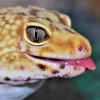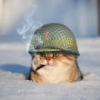1. Location of collection (ie: park/area, city/town, state/province, country). Done.
2. Date of collection (more important for ID's of queens). Unfortunately, I don't remember the exact date, but it was sometime around mid to late September.
3. Habitat of collection (ie: desert scrub, oak forest, riparian, etc.). School garden.
4. Length (to the nearest millimeter or 1/16th of an inch.) Millimeters is preferred. Length is measured from the tip of the head to the tip of the gaster, excluding antennae, legs and stingers. Do not estimate, use a ruler! No matter how good you think you are at guessing the length of something, it's amazing how far off you can be sometimes. About 9 to 9.5 millimeters.
5. Coloration, hue, pattern and texture (ie: dark redish-orange head, velvet-like gaster, translucent, hairy/bald, shiny/dull, etc.). Be as specific as possible, and you can use the diagram below if you need it. Head: triangular, dark brown, not shiny but not dull, eyes aren't large but aren't small, either. Mandibles are a lighter color than the rest of the head. Thorax: no spikes or bumps, same color as the head. It slopes slightly towards the gaster and is in between dull and shiny. Petiole: not very visible. Gaster: lighter color than the head or abdomen. About twice as long as the thorax. From the top, the plates are a golden-brown, each plate having a gradation from a darker golden-brown to a lighter golden-brown. in between the plates is a thin stripe of film that's a bright golden-yellow. From the side, it's all the golden-yellow film. On the bottom, the plates are there, and possess the same general gradation, but they're a lot smaller and lighter, so the almost blend in with the golden-yellow film. Legs: the femur is just slightly lighter in color than the head & thorax, the tarsal segments are only sightly darker than the golden-yellow of the abdomen, and the tibia is in between the two other leg parts.
6. Distinguishing characteristics (ie: one petiole node/two petiole nodes, length and orientation of any spines or bumps on the thorax or waist, head shape, eye size, shape of mandibles, number of antennal segments, etc.) One petiole, triangular head, golden-brown abdominal plates.
7. Anything else distinctive (ie: odor, behavior, characteristics relative to others in the colony, etc.). She doesn't seem to get bothered by much and is very calm. She doesn't get freaked out when I take her out of the drawer. The only thing so far that annoys her is really bright lights, like when I look at her under my microscope. She also tends to stay near the water end of the tube, sometimes directly on the cotton.
8. Nest description (if you can find the nest, and you're sure it belongs to the ant you collected) (ie: rotted log, volcano-shaped mound of coarse gavel 10cm in diameter, etc.). None
9. Nuptial flight time and date (if you witnessed the ant or it's colony having a nuptial flight or caught an alate you are confident was flying that day or time) Unsure, though I found her around 4pm.
10 . Post the clearest pictures possible of the top, side, and face of the ant in question, and if possible, their nest and the habitat they were collected in. Sorry if the photos end up being links. I'm not good with uploading photos.
http://www.formicult...abdomenthorax3/
http://www.formicult...abdomenthorax2/
http://www.formicult...w-thorax-focus/
http://www.formicult...n-gasterthorax/
http://www.formicult...-queen-gaster1/
http://www.formicult...-queen-gaster2/
http://www.formicult...-queen-gaster3/
http://www.formicult...-queen-gaster4/
http://www.formicult...een-headthorax/
http://www.formicult...adthoraxgaster/
http://www.formicult...us-queen-head1/
http://www.formicult...us-queen-head2/
http://www.formicult...us-queen-head3/
http://www.formicult...us-queen-head4/
http://www.formicult...us-queen-head5/
http://www.formicult...-queen-topview/
http://www.formicult...queen-topview2/
http://www.formicult...queen-topview3/
http://www.formicult...queen-topview4/
http://www.formicult...queen-topview5/
Edited by Mettcollsuss, January 5 2018 - 7:10 AM.
























